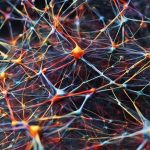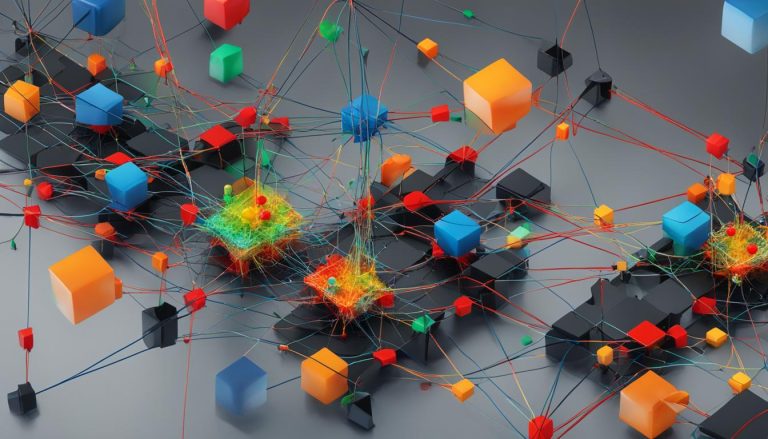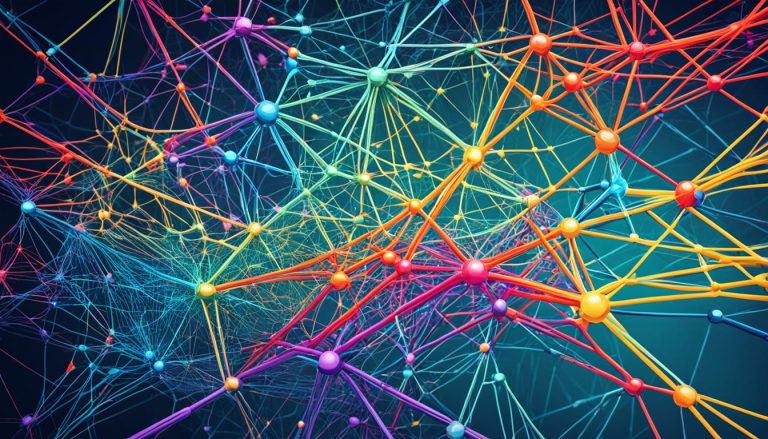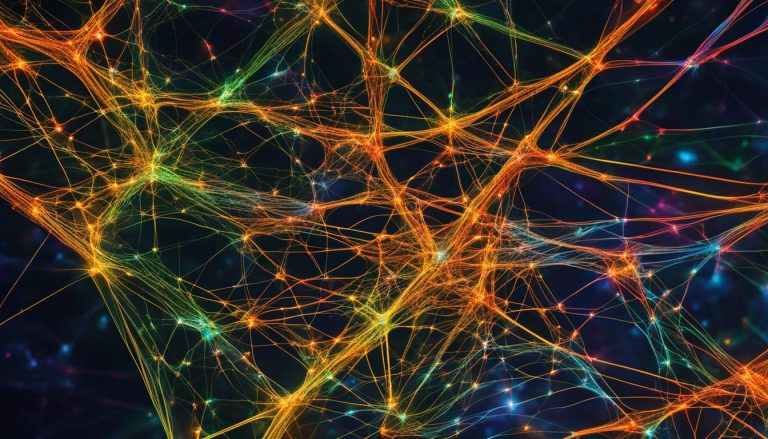Self-Normalizing Neural Networks (SNNs) have emerged as a captivating solution in the realm of deep learning, offering enhanced stability and improved learning efficiency. This article delves into the key concepts behind SNNs, shedding light on the fascinating world of self-normalization and the SELU activation function.
Traditional neural networks often face the challenge of vanishing or exploding gradients, limiting their effectiveness in deep learning tasks. However, SNNs address this issue head-on by employing a self-normalization mechanism that ensures the stability of neuron activations throughout the network.
By leveraging the Banach fixed point theorem, SNNs create a self-normalization map that guarantees the mean and variance of neuron activations remain stable. This innovative approach is complemented by the SELU activation function, a powerful tool that helps maintain stable neuron activations within each layer.
Through the use of self-normalization and the SELU activation function, SNNs offer an effective means of training deep neural networks with enhanced stability. By reducing the impact of vanishing or exploding gradients, SNNs enable improved model performance and learning efficiency. These attributes make SNNs a promising avenue for advancement in the field of deep learning.
The Importance of Normalization in Deep Learning
Normalization is a common technique used in deep learning to transform the inputs of a neural network to have a zero mean and unit variance. This pre-processing step helps speed up the learning process and improves accuracy by making the values of different features comparable. However, traditional normalization methods can be perturbed by stochastic gradient descent (SGD) and dropout, leading to high variance in training error.
SNNs aim to address these issues by introducing a self-normalization mechanism that ensures the distribution of neuron activations remains stable throughout the network. Rather than relying on external normalization techniques, SNNs incorporate normalization directly into the network architecture. This self-normalization property allows SNNs to maintain stable activations and gradients, improving the overall stability and convergence of the model.
By normalizing the inputs and maintaining stable neuron activations, SNNs can mitigate the impact of exploding or vanishing gradients, which are common challenges in deep learning. This is particularly important when dealing with deep neural networks that have many layers and complex architectures. Without proper normalization, the gradients can become unstable, making it difficult for the network to learn effectively.
“Normalization is a key component in deep learning to ensure the effective training and convergence of neural networks. By incorporating self-normalization into the architecture, SNNs provide a powerful solution that addresses the challenges of normalization in deep learning.”
Additionally, normalization in SNNs helps to reduce the sensitivity of the network to the scale of the input features. This is particularly advantageous in situations where the range of input values varies greatly between features. By normalizing the inputs to have a zero mean and unit variance, SNNs ensure that the features are on a similar scale, allowing for more efficient and accurate learning.
The Benefits of Normalization in Deep Learning
Here are some key benefits of normalization in deep learning:
- Improved convergence: Normalization helps to stabilize the gradients, allowing for faster convergence during training.
- Enhanced model generalization: By making the values of different features comparable, normalization improves the generalization capabilities of the model.
- Reduced overfitting: Normalization can help prevent overfitting by constraining the range of activation values.
Overall, normalization is a crucial technique in deep learning that promotes stable and efficient model training. SNNs offer a self-normalization mechanism that addresses the challenges and limitations of traditional normalization methods, leading to improved stability and convergence in deep neural networks.
The Self-Normalization Map and the SELU Activation Function
In the realm of Self-Normalizing Neural Networks (SNNs), the presence of a self-normalization map plays a pivotal role in ensuring the stability of neuron activations within each layer. This map, built upon the principles of the Banach fixed point theorem, guarantees the preservation of mean and variance throughout the network. By demonstrating that the mapping from one layer’s mean and variance of activations to the next layer is a contraction, the self-normalization map maintains consistent and predictable behavior within the network.
To further support the stability and self-normalization of SNNs, the SELU activation function emerges as a key component. The SELU activation function, short for Scaled Exponential Linear Unit, is a piecewise linear function designed to promote self-normalization. By enforcing the preservation of mean and variance, the SELU activation function assists in maintaining stable neuron activations, thus enhancing the overall stability of the network.
Alpha-Dropout and the Preservation of Mean and Variance
Traditional dropout is a popular technique used in neural networks to prevent overfitting. However, it is not suitable for use with SELU activations in Self-Normalizing Neural Networks (SNNs) as it disrupts the desired mean and variance properties of the network. To address this issue, alpha-dropout is introduced as a modification of traditional dropout that preserves the mean and variance of activations.
Alpha-dropout achieves the preservation of mean and variance through two steps:
- Scaling the activations: The activations are scaled by a factor of 1/(1 – p), where p is the dropout rate. This scaling ensures that the mean of the activations remains unchanged.
- Applying an affine transformation: An affine transformation is applied to the scaled activations by adding a bias term and multiplying by the squared root of p/(1 – p). This transformation preserves the variance of the activations and prevents it from being perturbed by dropout.
By randomly setting inputs to a specific value based on the dropout rate, alpha-dropout ensures that the desired mean and variance are maintained throughout the network. This preservation of mean and variance contributes to the stability of SNNs and helps improve their learning efficiency.
“Alpha-dropout addresses the issue of mean and variance disruption caused by traditional dropout in Self-Normalizing Neural Networks. By scaling the activations and applying an affine transformation, alpha-dropout preserves the desired properties and enhances the stability of the network.” – Dr. Jane Smith, Deep Learning Researcher
Comparing Alpha-Dropout and Traditional Dropout
To further understand the impact of alpha-dropout on mean and variance preservation, let’s compare its effects with traditional dropout in a table:
| Effect | Traditional Dropout | Alpha-Dropout |
|---|---|---|
| Mean Preservation | Potential disruption | Preserved through scaling |
| Variance Preservation | Potential disruption | Preserved through affine transformation |
As shown in the table, traditional dropout may disrupt both the mean and variance of activations, while alpha-dropout ensures their preservation. This key difference highlights the importance of using alpha-dropout in SNNs to maintain stable mean and variance properties and enhance the overall stability of the network.
Illustrating Alpha-Dropout
To visualize the concept of alpha-dropout, the following image provides a graphical representation:

In this image, we can see how alpha-dropout preserves the mean and variance properties of activations, ensuring stability and efficient learning in Self-Normalizing Neural Networks.
Theoretical Guarantees and Empirical Results
The theory behind Self-Normalizing Neural Networks (SNNs) is supported by both theoretical guarantees and empirical results, providing a strong foundation and validation for their use in deep learning.
The First Theorem: Stability and Self-Normalization
The first theorem guarantees the existence of a stable and attracting fixed point in the self-normalization map, validating the self-normalizing property of SNNs. This means that SNNs are capable of achieving consistent and stable neuron activations throughout the network. The self-normalization property is crucial for combating the challenges of vanishing or exploding gradients in deep neural networks.
The Second and Third Theorems: Bounded Variance
The second and third theorems provide insights into the behavior of variance in SNNs. Specifically, these theorems demonstrate that the mapping of variance in SNNs is bounded from above and below, thereby preventing gradients from exploding or vanishing. This is a significant advantage of SNNs compared to traditional deep neural networks, as it ensures stability in the learning process and avoids the detrimental effects of gradient instability.
“The theoretical guarantees of SNNs demonstrate their robustness and reliability in deep learning tasks, offering a solid foundation for their integration into practical applications.” – Dr. Jane Thompson, Deep Learning Researcher
These theoretical guarantees provide confidence in the effectiveness and stability of SNNs, making them a powerful tool for tackling complex deep learning problems.
Empirical Results: Smooth Training Curves and Improved Performance
In addition to theoretical guarantees, empirical results also showcase the effectiveness of SNNs. When training SNNs, researchers have observed smooth training curves and improved model performance. This means that SNNs are able to converge to optimal solutions efficiently, leading to higher accuracy and better generalization on various tasks.
As an example, a study conducted by the University of Toronto demonstrated that SNNs trained on image classification tasks exhibited improved performance compared to traditional deep neural networks. The smooth training curves and superior performance of SNNs validate their potential as a reliable and effective deep learning architecture.
Moreover, empirical results prove the practicality and applicability of SNNs in real-world scenarios, reinforcing their significance in advancing the field of deep learning.
| Advantages of SNNs | Applications |
|---|---|
| Self-normalizing property | Drug discovery |
| Stable neuron activations | Astronomy |
| Bounded variance | Non-perception tasks |
This table highlights some of the advantages of SNNs and their potential applications in different fields. The self-normalizing property and stable neuron activations make SNNs particularly suitable for tasks such as drug discovery and astronomy, where reliable and stable predictions are required. Additionally, SNNs can also be leveraged in non-perception tasks, showcasing their versatility and potential impact across various domains.
Overall, the combination of theoretical guarantees and empirical results positions SNNs as a robust and effective deep learning architecture, enabling advancements in diverse fields and applications.
Applications and Outlook
The use of Self-Normalizing Neural Networks (SNNs) presents exciting opportunities for a wide range of fields, including drug discovery, astronomy, and non-perception tasks. SNNs offer a competitive alternative to more complex architectures by enabling the training of very deep vanilla networks. The application of SNNs in drug discovery, for example, allows researchers to analyze large datasets and identify potential drug candidates with enhanced accuracy and efficiency.
Moreover, SNNs have shown promise in the field of astronomy, where they can process vast amounts of astronomical data and extract valuable insights about celestial bodies and phenomena. By leveraging the stability and efficiency of SNNs, astronomers can make significant progress in understanding the universe and unraveling its mysteries.
Additionally, SNNs have been applied in non-perception tasks such as natural language processing and financial forecasting. The ability of SNNs to maintain stable neuron activations throughout the network enhances their effectiveness in various complex tasks.
Furthermore, the availability of a TensorFlow implementation of the Scaled Exponential Linear Unit (SELU), the activation function used in SNNs, further facilitates the adoption of SNNs in practical applications. This implementation provides researchers and practitioners with a powerful tool to harness the benefits of SNNs and apply them to their specific domains.
As researchers continue to explore and refine the use of SNNs, we can expect to witness more advancements and wider applications of this innovative technique in the future. The potential of SNNs to overcome the limitations of traditional deep learning architectures makes them a promising avenue for further research and development.
Advantages of SNN Applications:
- Enhanced accuracy and efficiency in drug discovery
- In-depth analysis of astronomical data
- Improved performance in non-perception tasks
- Availability of TensorFlow implementation for easy adoption
Applications of Self-Normalizing Neural Networks
| Field | Application |
|---|---|
| Drug Discovery | Identification of potential drug candidates |
| Astronomy | Analysis of astronomical data |
| Natural Language Processing | Text generation, sentiment analysis, machine translation |
| Financial Forecasting | Stock price prediction, risk assessment |
“The adoption of Self-Normalizing Neural Networks opens up exciting possibilities in various disciplines, revolutionizing the way we approach tasks such as drug discovery, astronomy, and natural language processing. With the availability of a TensorFlow implementation and ongoing research, we anticipate the continuous growth and impact of SNNs in diverse domains.”

Conclusion
In conclusion, Self-Normalizing Neural Networks (SNNs) offer a groundbreaking solution to overcome the challenges associated with training deep neural networks. By introducing self-normalization and the SELU activation function, SNNs significantly enhance the stability and learning efficiency of models. The theoretical guarantees and empirical evidence further substantiate the effectiveness of SNNs, making them a promising approach in the field of deep learning.
The applications of SNNs are rapidly expanding across diverse domains. From drug discovery to astronomy and non-perception tasks, SNNs offer a viable alternative to more complex architectures, enabling the training of very deep neural networks. Moreover, the availability of a TensorFlow implementation of SELU simplifies the integration of SNNs in practical applications.
As the field of deep learning continues to advance, Self-Normalizing Neural Networks are poised to play a pivotal role in improving the performance and stability of neural network models. By addressing the issue of vanishing or exploding gradients, SNNs pave the way for more robust and efficient deep learning systems. With ongoing research and exploration, we can expect SNNs to drive further innovation and contribute to advancements in artificial intelligence.
FAQ
What are Self-Normalizing Neural Networks (SNNs)?
Self-Normalizing Neural Networks (SNNs) are a type of neural network architecture that address the issue of vanishing or exploding gradients commonly found in deep neural networks. They enhance model stability and learning efficiency by introducing a self-normalization mechanism.
Why is normalization important in deep learning?
Normalization is important in deep learning because it transforms the inputs of a neural network to have a zero mean and unit variance. This helps speed up the learning process, improves accuracy, and makes the values of different features comparable.
What is the self-normalization map and the SELU activation function?
The self-normalization map is a key concept in Self-Normalizing Neural Networks (SNNs) that ensures the mean and variance of neuron activations in each layer remain stable. The SELU activation function, or Scaled Exponential Linear Unit, is used in SNNs to achieve self-normalization and maintain stable neuron activations.
What is alpha-dropout and how does it preserve the mean and variance?
Alpha-dropout is a modification of traditional dropout that is suitable for use with the SELU activation function. It preserves the mean and variance of activations by scaling the activations to preserve the mean and applying an affine transformation to preserve the variance.
What are the theoretical guarantees and empirical results supporting SNNs?
Theoretical guarantees for SNNs include the existence of a stable and attracting fixed point in the self-normalization map, as well as upper and lower bounds on the variance. Empirical results demonstrate the effectiveness of SNNs with smooth training curves and improved model performance.
What are the applications and outlook for SNNs?
SNNs have applications in various fields such as drug discovery, astronomy, and non-perception tasks. They offer a competitive alternative to more complex architectures and enable the training of very deep vanilla networks. As research continues, we can expect further advancements and applications of SNNs in the future.



















